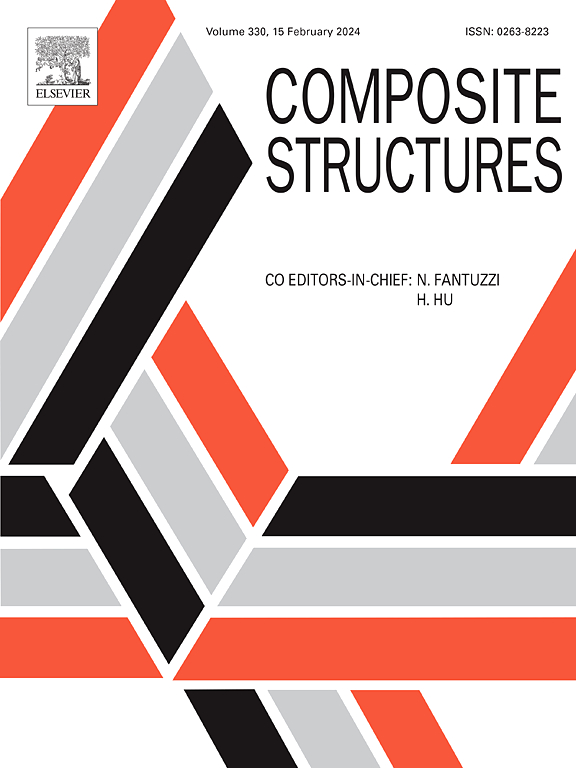3D CDM for interfacial friction quantization and its effects on load-slip behavior of stud-UHPC connection
IF 7.1
2区 材料科学
Q1 MATERIALS SCIENCE, COMPOSITES
引用次数: 0
Abstract
Three-dimensional (3D) compression-dispersion model (CDM) for interfacial friction quantization and its effects on load-slip behavior of stud-UHPC connection are studied in the present paper. Firstly, an 3D CDM is proposed to quantify the positive effects of interfacial friction force on shear behavior of stud-UHPC connection. Then, a triple stage load-slip model is proposed for stud-UHPC connection considering the effects of interfacial friction force. The accuracy of the proposed models is verified by published data from push-out test. The advantages of the proposed 3D CDM for interfacial friction quantization are discussed and the effects of interface friction force on load-slip behavior of stud-UHPC connection are clarified. Results show that the proposed 3D CDM based model can predict accurately the distribution of interfacial friction stress in two directions while the 2D CDM based model can only reveal the distribution of the interfacial friction stress in one direction. Interfacial friction force increases about 12% of the shear stiffness, the yielding and the peak loads of stud-UHPC connection. The elastic stiffness of stud-UHPC connection increases with stud diameter, UHPC strength and interfacial friction force, which is most sensitive to stud diameter, followed by UHPC strength and interfacial friction force.
三维CDM界面摩擦量化及其对螺柱- uhpc连接载荷-滑移行为的影响
本文研究了用于界面摩擦量化的三维压缩-弥散模型(CDM)及其对螺柱- uhpc连接载荷-滑移行为的影响。首先,提出了一种三维CDM来量化界面摩擦力对螺栓- uhpc连接剪切性能的积极影响。在此基础上,建立了考虑界面摩擦力影响的螺栓-超高性能混凝土连接三阶段荷载-滑移模型。通过已发表的推出试验数据验证了所提模型的准确性。讨论了所提出的三维CDM在界面摩擦量化方面的优势,并阐明了界面摩擦力对螺柱- uhpc连接载荷-滑移行为的影响。结果表明,基于CDM的三维模型可以准确预测界面摩擦应力在两个方向上的分布,而基于CDM的二维模型只能显示界面摩擦应力在一个方向上的分布。界面摩擦力增加了12%左右的抗剪刚度、屈服和峰值荷载。螺柱-UHPC连接的弹性刚度随螺柱直径、UHPC强度和界面摩擦力的增大而增大,其中对螺柱直径最敏感,其次是UHPC强度和界面摩擦力。
本文章由计算机程序翻译,如有差异,请以英文原文为准。
求助全文
约1分钟内获得全文
求助全文
来源期刊

Composite Structures
工程技术-材料科学:复合
CiteScore
12.00
自引率
12.70%
发文量
1246
审稿时长
78 days
期刊介绍:
The past few decades have seen outstanding advances in the use of composite materials in structural applications. There can be little doubt that, within engineering circles, composites have revolutionised traditional design concepts and made possible an unparalleled range of new and exciting possibilities as viable materials for construction. Composite Structures, an International Journal, disseminates knowledge between users, manufacturers, designers and researchers involved in structures or structural components manufactured using composite materials.
The journal publishes papers which contribute to knowledge in the use of composite materials in engineering structures. Papers deal with design, research and development studies, experimental investigations, theoretical analysis and fabrication techniques relevant to the application of composites in load-bearing components for assemblies, ranging from individual components such as plates and shells to complete composite structures.
 求助内容:
求助内容: 应助结果提醒方式:
应助结果提醒方式:


